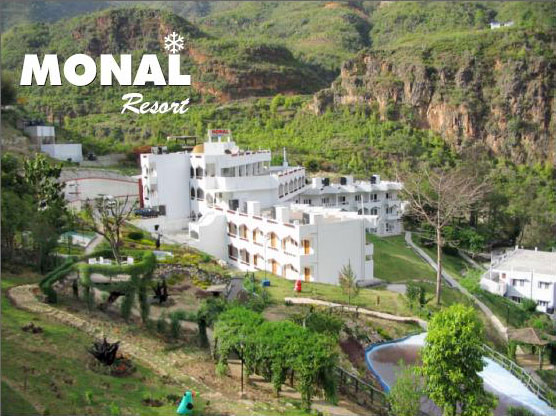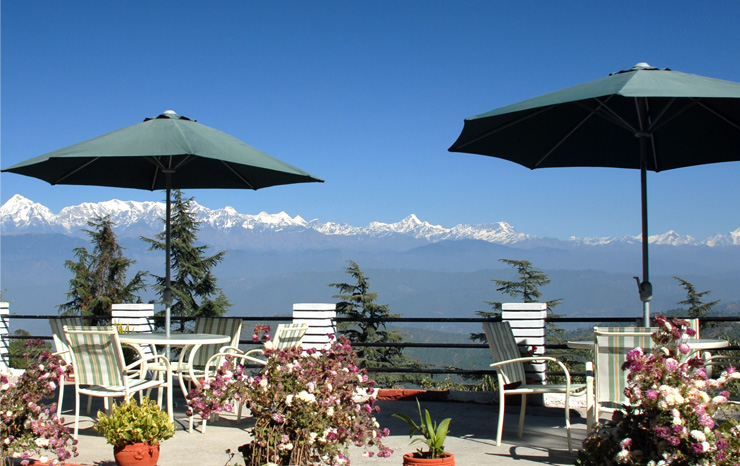The five Kedar lies in the valleys between the rivers Bhagirathi and Alaknanda. The term Kedar itself means a natural rock formation or a glacial moraine. According to legend, himalayas Kedarnath, the chief seat of the Panch Kedar, come into being during the period when the five Pandava brothers were asked to seek Shiva's blessings, purging them off sin of fratricide, or killing their cousin brothers in the terrifying bettle of Kurukshetra. Shiva disguised himself as a bull and started to plunge underground when he was spotted by Pandavas. No wonder the natural rock formation that is worshipped here resembles the rump of bull. The other four places where Shiva is worshipped take their appearance from different part of his body - the navel at Madmaheshwar, the arm at Tungnath, the face at Rudranath, and the matted hair at Kalpeshwar.
 Kedarnath:-
Kedarnath:-
The holiest of Shiva's shrines is likened to gold among base metals so that every pilgrim finds peace here, and it is said that devotees who die here become one with Shiva himself. The temple of Kedarnath, located at a height of 3,581 mts, stand at the head of the Mandakini river, with Kedarnath peak keeping vigil above it. The temple is dedicated to the Sadasiva or invisible form of Shiva, and is represented by a natural rock formation. Beyond the temple is the highway to heaven, called Mahapanth.
 Madhmaheshwar:-
Madhmaheshwar:-
Shiva is worshipped at Madmaheshwar in the form of navel - shaped lingum. Located at base of Chaukhamba peak, at an altitude of 3,289 mts, the classic temple architecture belongs to the north - Indian style. So sanctified is the water here that even a few drops are considered sufficient for absolution. The natural scenery is dramatically wild, with deep gorges and himalayas valleys, mountainsides flung upwards towards the skies, and forests where the snow lies thick in winter, only to be replaced by a carpet of greenery in the summer. Kedarnath and Neelkanth peaks are also visible from here, the entire ring of mountains associated with the life and times of shiva. The confluences of two streams at Gaundar just short of the temple, is one of the prettiest spots in the region.
 Tungnath:-
Tungnath:-
The sanctity of the region of Tungath is considered unsurpassed. The peak of Tungnath is the source of three springs that from the river Akashkamini. At this temple at 3,680 mts, Shiva's arm is worshipped. The highest hindu shrine in the Himalayas, 3kms uphill from Chopta, Tungath is reached through a path that wends through alpine meadows and rhododendron thickets. An hour's climb from here leads to Chandrashila with its panoromic views. The entire journey and the shrine are located in some of the finest, most picturesque pocket of the Himalaya.
 Rudranath:-
Rudranath:-
Devotees come to Rudranath to offer ritual obeisance ti their ancestors, for it is here, at Vaitarani river that the soal of dead cross when entering another world. The temple of Rudranath at 2,286 mts, entails trekking through ridges at almost twice that height before reaching the meadow where it is located. Within the sanctum, Shiva's image is worshipped in the form of his face. The temple is surround by several pools - Surya Kund, Chandra Kund, Tara Kund, Manas Kund - while the great peaks of Nanda Devi, Trishul and Nanda Ghunti rear overhead.
 Kalpeshwar:-
Kalpeshwar:-
A favorite spots for sages who come here to meditate, following the precedent of Arghya who performed austerities and created the celebrated nymph, Urvashi, here, and the irascible Durvasha who meditated under the wish fulfilling tree, Kalpavriksha, Pilgrims pray at the small rock temple at a height of 2,134 mts. before the matted tresses of Shiva enshrined in rock in the sanctum sanctorum. The sanctum is preceded by a natural cave passage. Surrounded by thick forests and terraced fields in the Urgam valley, the temple is reached following a 10 km. long trek.
Book your Tour, Fill our Booking Request Form by Clicking here



